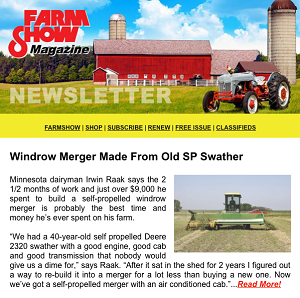You have reached your limit of 3 free stories. A story preview is shown instead.
To view more stories
(If your subscription is current,
click here to Login or Register.)
Consider Kangals As Livestock Guardian Dogs
From a distance, you might confuse a Kangal with a yellow lab. Both have tawny fur and happy faces. But up close, this massive canine makes a very different impression.
Kangals have black features and curled tails, with fawn or dun-colored bodies. They have deep, blunt muzzles and dense, silky coats that are esp
..........
You must sign in, subscribe or renew to see the page.

You must sign in, subscribe or renew to see the flip-book
Consider Kangals As Livestock Guardian Dogs
From a distance, you might confuse a Kangal with a yellow lab. Both have tawny fur and happy faces. But up close, this massive canine makes a very different impression.
Kangals have black features and curled tails, with fawn or dun-colored bodies. They have deep, blunt muzzles and dense, silky coats that are especially thick around their necks. Each is packed with muscle and slightly longer than tall. Until recently, Kangals were considered the same breed as the Anatolian Shepherd Dog. They now have a unique breed standard from the FCI and the Kennel Club.
Legend says that Kangal shepherd dogs, often called Turkish Kangals, were originally bred to protect villagers from bear attacks. Today, they serve as livestock guardians. The name comes from the Central Anatolian town of Kangal, Turkey. The breed shares close genetics with other dogs from Kazakhstan, Uzbekistan, Tajikistan and Afghanistan, providing further evidence that they were brought from Central Asia by nomadic Turks.
The breed was created to stay with livestock without a handler, which offers potential for some creative uses. In Namibia, a pack of 300 Kangals, sponsored by the Cheetah Conservation Fund, protects livestock from cheetah attacks, reducing the number of big cats killed by farmers in retaliation.
Kangals are usually not aggressive, which sets them apart from other livestock guardians. Instead, the breed waits and watches before attacking, typically only responding if perceives a threat. This makes them less dangerous to harmless animals. However, they often perceive any shouts from their owners as encouragement to continue the attack. For that reason, itís best to stay quiet if a fight breaks out so as not to encourage them.
Should you invite a Kangal to your farm or home? Like all dog breeds, they have pros and cons. Training them can be challenging, and theyíre definitely not suitable for city living or inexperienced owners.
Prospective Kangal owners should have large, rural properties with secure fencing. Plan to dedicate plenty of time to training in the early months, as it takes some conditioning to teach them to listen to authority. Expect adult Kangals to need at least two hours of exercise a day. They can run up to 30 mph, so provide ample space to move. Without enough physical and mental stimulation, the breed will become destructive and prone to barking.
Kangals are extremely loyal to their families, so they can be wary of strangers and other animals. Itís best to socialize them with children and other dogs early on, but even then, the breed tends to bark frequently and can be territorial.
Plan to brush the dogs a few times a week, but their dirt-resistant topcoat means they rarely need baths. Make sure you consider a Kangalís size. These are some of the largest breeds in the world, and they need space to stretch out and roam. With proper care, these protective giants can live 10 to 13 years.
To read the rest of this story, download this issue below or click
here to register with your account number.





